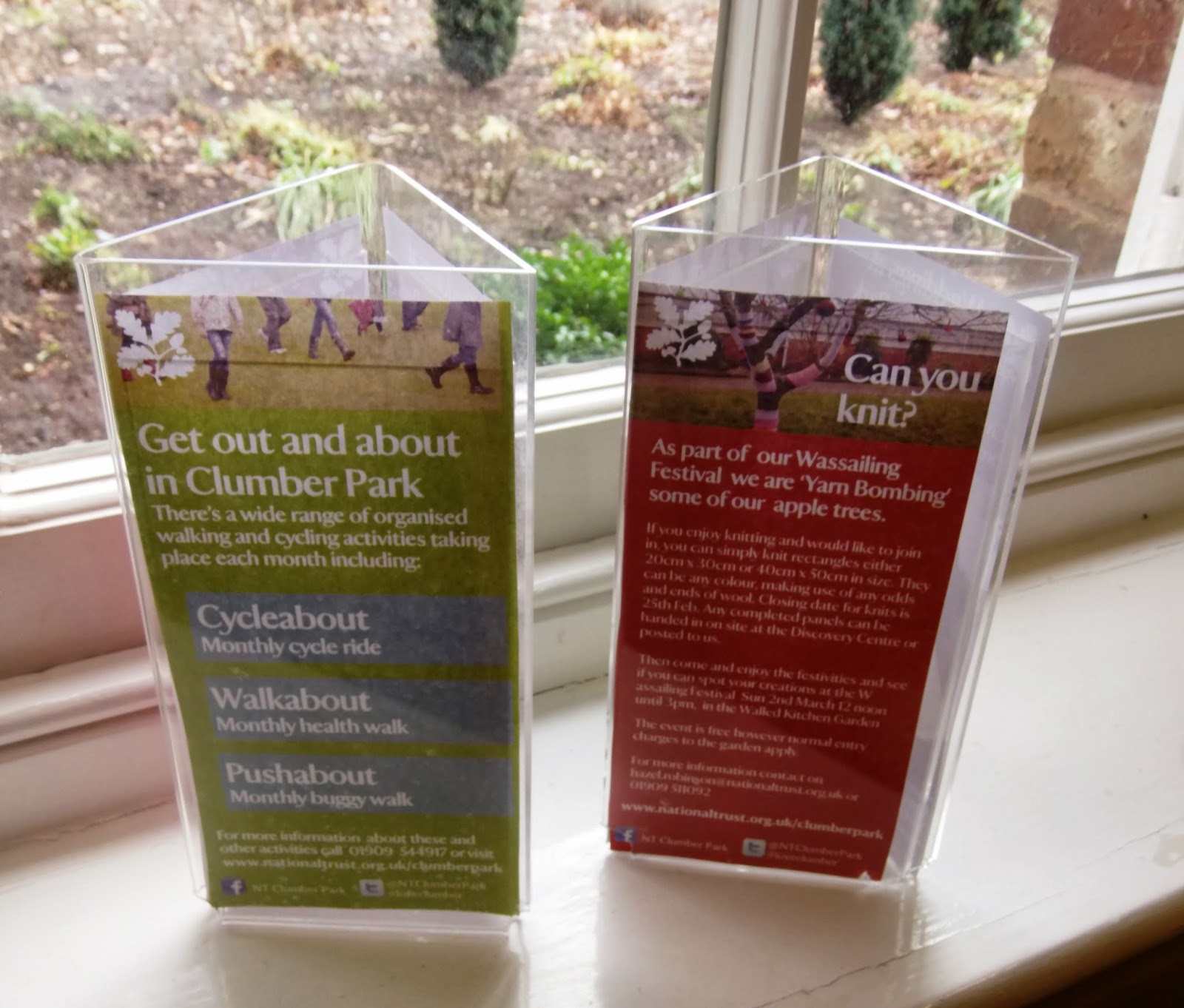Donna shares her day at the Discovery
Centre
9:45
am
I arrive at Clumber Park and en-route to the Discovery
Centre I chat with fellow volunteers from different teams within the park. It's great to have a catch up and find out
what's happening elsewhere around Clumber.
 |
| Donna Wilkinson, Discovery Centre Volunteer |
9:55
am
After checking out
the information board in the mess room for an update I pop my head round the
office doors to say hello to staff members.
Eyes glued to the monitor, fingers clicking away at the keyboard and a
buzz of activity from the telephones and radios, but this does not deter the
team from sparing their time. There's no
demarcation between staff and volunteer.
I'm always made to feel welcome and a valued member of the Clumber team.
Another volunteer
also arrives and it's great to see either a familiar face or someone I haven't
seen for a while.
10:00
am
As the gates to Clumber Park officially open, so do the doors to
the Discovery Centre and visitors begin to trickle in. Together we two volunteers not only meet and
greet visitors, but share our passion for nature. Often there is a group of children to
interact with. What will we find in the tank?
Can we spot all of the animals in the trees? Which animal or plant will surprise us most
under the microscope? The children convey their interest by telling stories
of animals back home, be they family pets or wild animals.
It's not children
alone, but the adults are also enthusiastic to talk. It's wonderful to hear about sightings and
experiences from around the country, indeed from the four corners of the
globe. Only the other week a family from
France
was teaching me the French names for the animals. And today, a couple speaks of the number of
years they have been visiting Clumber.
They go on to express their sadness at the loss of animals they would
have normally encountered on their daily walks in their own locality. This is what makes volunteering at Clumber Park so special: it's real-life. It's talking with people face-to-face about
things which have meaning to them and which exudes human
emotion.
11:45
am
The conversation does
not always centre on nature. Frequently,
there is a divergence to other shared
commonalities. Life in general really
and, of course, a touch of good old British weather mixed in! Interactions also take place outside the
entrance to the Discovery Centre where family members wait with pet dogs. Today is no exception and in the sunshine I
speak to a mother awaiting her husband and three children who are exploring the
centre. We talk of pets, children,
school and Angola
- her native African country. I love
learning about all walks of life.
12:30
pm
A family who visited
the Discovery Centre in the morning returns to tell me they discovered a beetle
outside in the park. The whole family
then becomes engrossed in the library searching for an image in an attempt to
name the beetle. The final piece in the
jigsaw is the two children recording its name - June bug (Cockchafer) - in the wildlife diary.
13:45
pm
It's a late lunch
today. I must have lost track of time
when helping preparing resources with a member of staff. The mess room is quiet today, but sometimes
it's a hive of activity with the general natter from volunteers and staff. A good laugh overall.
14:15
pm
My enthusiasm for the
animals in the tank is fostered when a visiting mother and child have a similar
interest. Together we experience our
first ever sight of hydra and mum points out to me the small froglets on the
water's surface. How had I neglected to
spot them when I arrived? Many of the
older visitors reminisce about catching stickleback and raising frogs from
frogspawn, thus providing an insight into different times when it felt much
more natural to interact with the great outdoors.
Two adults pop their
heads round the door, 'Can we come in?'. I take the couple for a guided tour of the
centre to show that it's not just intended for children. An hour later and the same couple are still
exploring and discovering.
15:30
pm
Another familiar face
pops into the Discovery Centre: a volunteer from another area of the park. We talk briefly about the newly formed Clumber
Volunteer Forum of which we're both members.
Both the National Trust and Clumber
Park seem to provide lots
of opportunities to help the volunteer develop their existing skills and learn
new ones.
16:00
pm
It’s time for a
coffee break whilst there's a quiet lull.
Mmm, lemon cake which one of the other volunteers brought me back from
the cafe earlier. We're certainly a good
bunch who knows how to look after one another!
17:00
pm
Groups of visitors
have now disappeared so it's time to close the doors to the Discovery
Centre. As I shut down the power to the
displays I ponder that the day has flown by which demonstrates, yet again, that
this is a wonderful location to give my time to.














